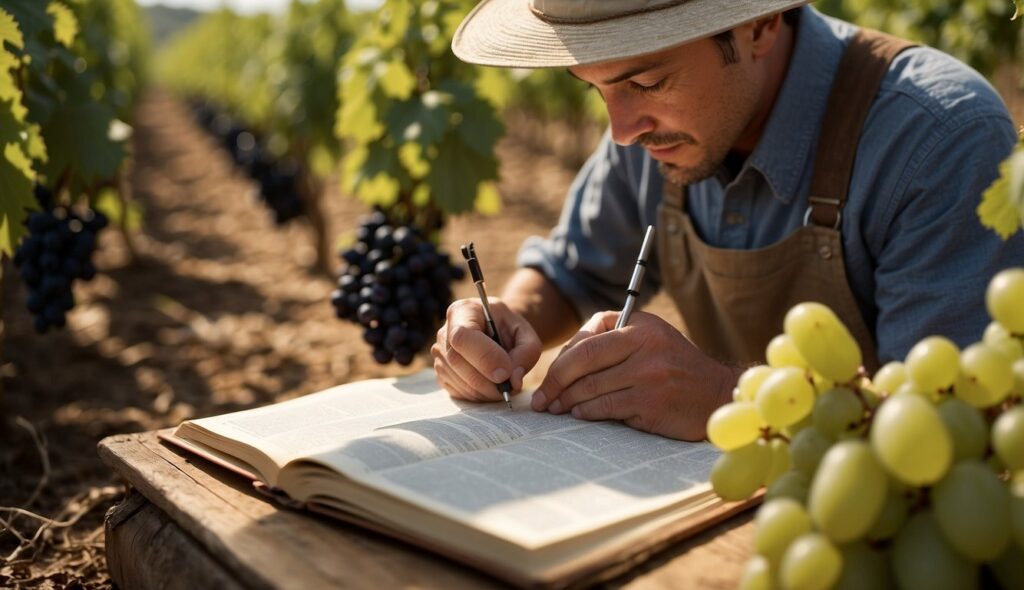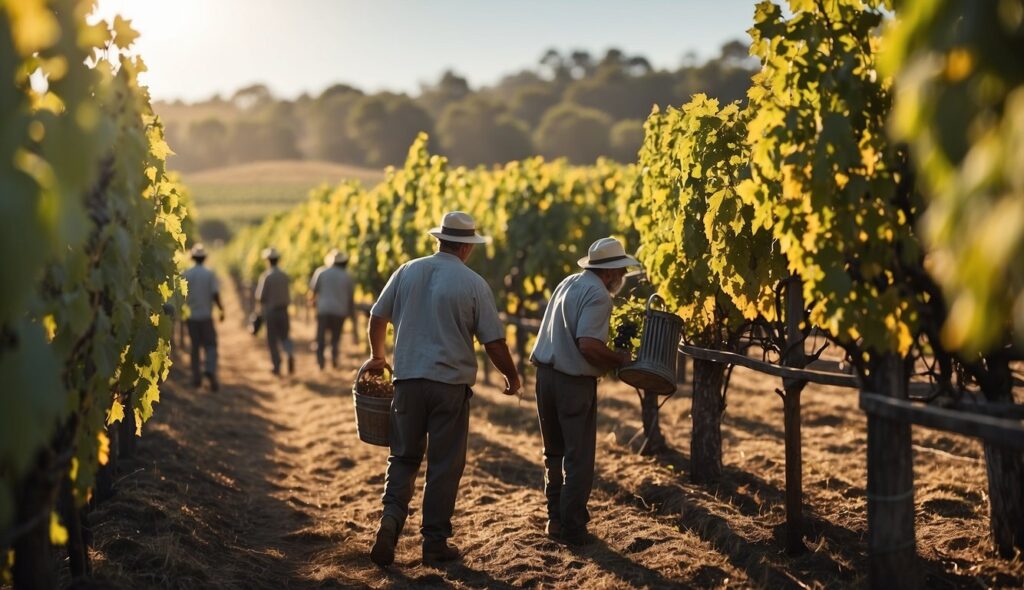Biodynamic wine practices take organic farming a step beyond by employing a holistic approach to agriculture. When you sip on a biodynamic wine, you’re experiencing the outcome of a winemaking process that is tuned in with the rhythms of the earth and the cosmos.
These wines are created within a self-sustaining ecosystem, where everything from the soil to the plants and animals play an intrinsic role. Think of biodynamic wine as a step closer to nature, connecting the practices in the vineyard to broader ecological and cosmic cycles.
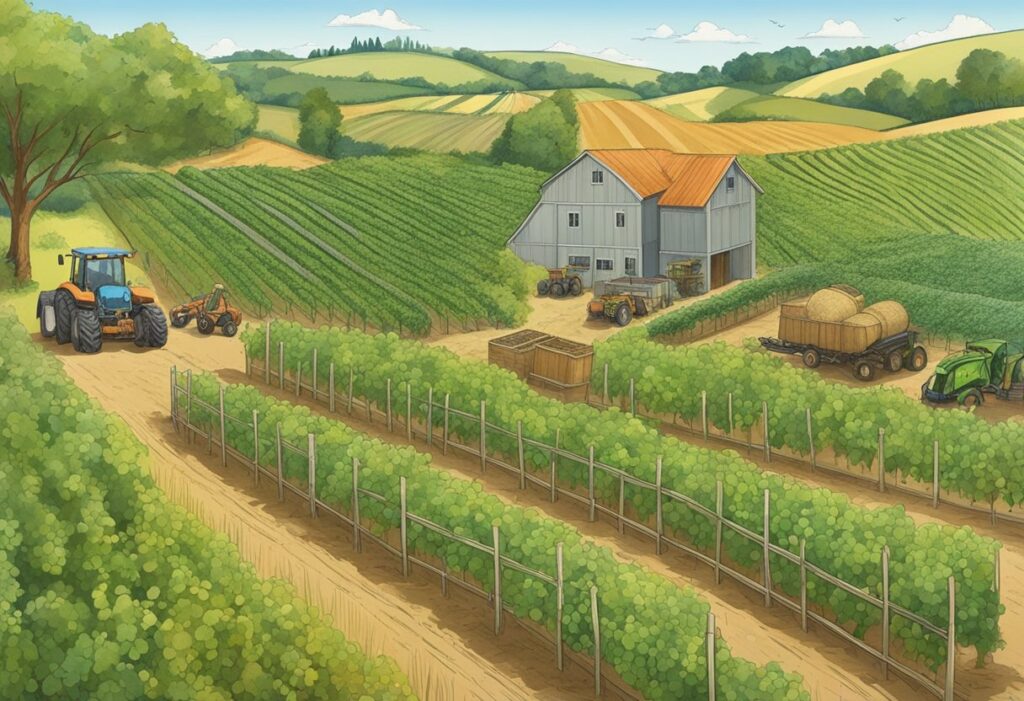
This approach can be traced back to the early 20th century, initiated by philosopher Rudolf Steiner. It integrates organic farming principles with specific preparations and a planting calendar aligned with lunar and astrological cycles. If you’re looking for a biodynamic wine, certifications from associations such as Demeter or Biodyvin can guide your selection, ensuring that the wine was produced in accordance with stringent biodynamic standards.
Key Takeaways
- Biodynamic wines stem from a farming ethos that nurtures the vineyard as a cohesive, interconnected organism.
- They unify organic agriculture with esoteric principles, governed by an astral-influenced calendar.
- Certification labels are the key to distinguishing authentically biodynamic wines.
Origins of Biodynamic Wine Practices
Biodynamic wine practices are deeply rooted in a philosophy that dates back to the early 20th century, combining mystical elements with advanced organic farming methods, emphasizing a sustainable and holistic approach to viticulture.
Rudolf Steiner and Anthroposophy
Austrian philosopher Rudolf Steiner, the founder of anthroposophy, introduced the concept of biodynamic agriculture in a series of lectures in 1924. His innovative approach merged science with spirituality, asserting that cosmic and earthly forces affect the life-cycle of plants. Steiner’s methods went beyond organic farming by suggesting preparations that promote soil health and plant growth, aligning agricultural practices with mystical and astrological understandings.
Development of Biodynamic Viticulture
Biodynamic viticulture takes Steiner’s principles into the unique context of the vineyard. This form of biodynamic farming cares for vines without synthetic chemicals and relies on natural compost and homeopathic preparations.
Sustainability is a key tenant, with farmers observing the natural rhythms of the earth and stars to guide their work. As this practice developed, it significantly influenced organic farming methods, though biodynamics involves more precise, spiritual elements.
Principles of Biodynamic Farming
Biodynamic farming integrates specific practices to nurture and enhance the quality of soil and plants, relying on organic methods and celestial rhythms.
Soil Fertility and Composting
You ensure soil fertility by using robust composting techniques. Biodynamic compost includes materials like cow horns filled with compost preparations and buried in soil to ferment. This process enriches the soil by creating humus that vitalizes your vineyard. The incorporation of chamomile and stinging nettles further enriches the compost, supplying necessary nutrients for healthy grape cultivation. These practices are essential for creating organic wine without synthetic inputs.
Use of Biodynamic Preparations
Your farm uses specialized biodynamic preparations made from herbs, minerals, and animal manures to stimulate plant growth and soil health. These preparations are applied in minute doses, much like homeopathic remedies for your land.
For example, a preparation called ‘500’ involves stuffing cow horns with manure, which you then bury over the winter months to harness the soil’s life forces. Organic certification often recognizes the earnest and sustainable efforts you put into such practices.
Incorporating Celestial Bodies
Observing lunar cycles and astrological influences plays a pivotal role in your farming decisions. You plant, prune, and harvest based on a lunar calendar, taking into account the position of the moon and other celestial bodies. This cosmic consideration is believed to influence the biological processes of plants, including the grapes in your vineyard, thus aligning your agricultural activities with the rhythms of the universe.
Biodynamic Certification and Associations
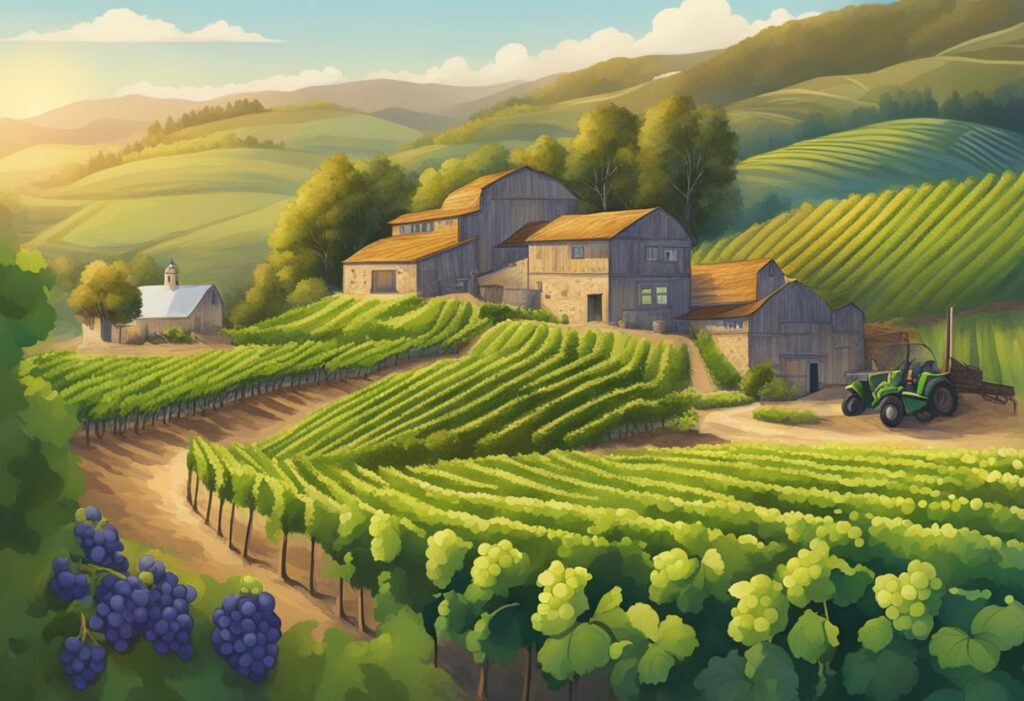
Biodynamic farming goes beyond organic agriculture, focusing on a sustainable and holistic approach. Your vineyard can become a certified producer of biodynamic wines by adhering to strict standards set by recognized associations.
Demeter International Guidelines
Demeter International is the primary certification body for biodynamic agriculture. Its guidelines ensure that vineyards maintain ecological balance and enrich the soil naturally. Demeter-certified wines come from vineyards that follow a stringent set of practices which include the prohibition of synthetic pesticides and fertilizers, incorporating astronomic cycles, and ensuring the overall health of the vineyard as a self-sustaining ecosystem.
Biodyvin Standards
Biodyvin is another certifying agency focused particularly on biodynamic vineyards. Its standards closely align with Demeter but are tailored specifically for viticulture. Members of Biodyvin commit to practices that foster sustainability, enhance biodiversity, and meet ethical wine production criteria.
By supporting Biodyvin’s standards, you are promoting an ethical approach to wine production that respects the environment and aims for the highest quality in biodynamic wines.
Cultivation and Winemaking Techniques
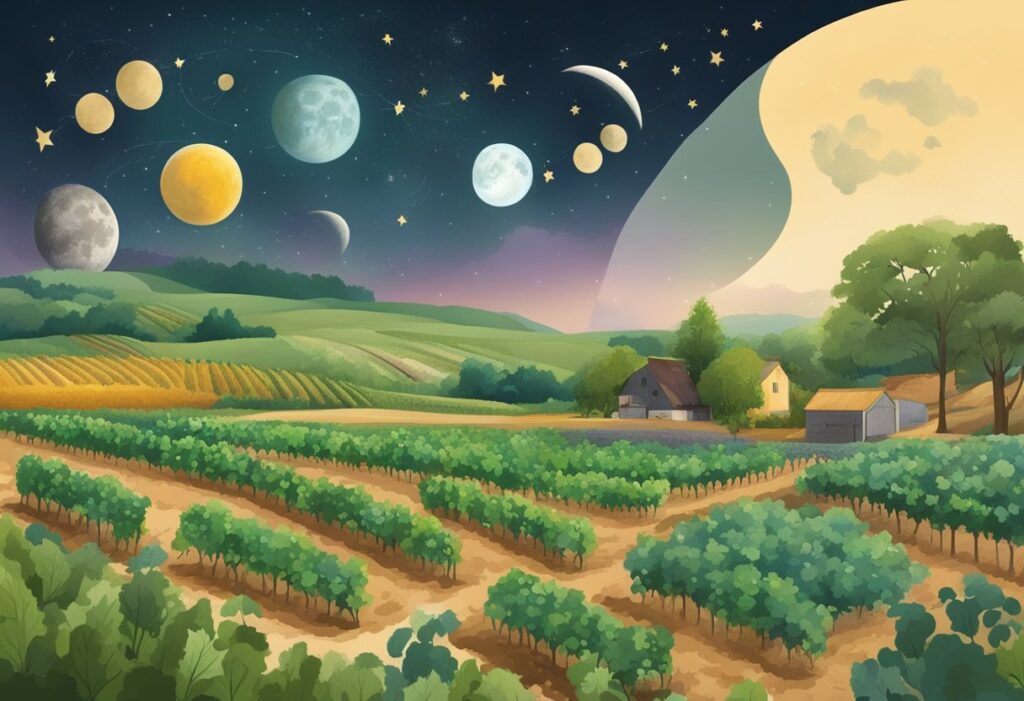
In biodynamic wine practices, every step from cultivation to winemaking is crucial. Your understanding of biodynamic principles will guide you in nurturing an interconnected ecosystem, where everything from soil health to cosmic rhythms play a role.
Dynamic Approach to Agriculture
Biodynamic viticulture views the vineyard as a single, self-sustaining organism. This approach integrates astronomical planting calendars to regulate vineyard activities, including sowing and harvesting. You will use the alignment of the earth with lunar and solar cycles to enhance the life force in the grapes you cultivate.
The Role of Animals and Biodiversity
Your vineyard thrives on biodiversity, a core component of biodynamic agriculture. You’ll integrate livestock, such as chickens and sheep, to promote soil health and control pests naturally. These animals provide natural fertilizers and contribute to a balanced ecosystem, reducing the need for external additives.
Biodynamic Wine Production Stages
From harvest to post-harvest, minimal intervention is key. In the fermentation process, biodynamic wine production dictates the use of native yeasts found on the grapes and in the winery environment. This promotes the true expression of the vineyard’s terroir. After fermentation, the wine is often aged in environments that adhere to biodynamic principles before it reaches you.
Calendar of Biodynamic Wine Practices
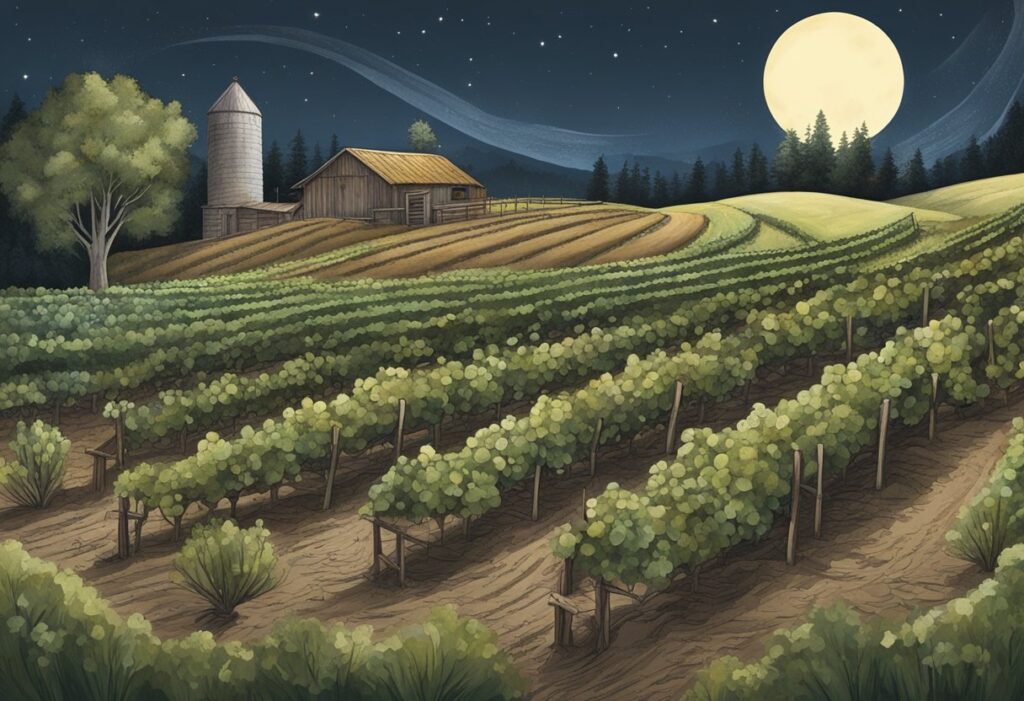
The Biodynamic Planting Calendar and Rhythmic Control of Winery Operations are essential for integrating lunar cycles into biodynamic viticulture, focusing on fostering a harmonious relationship between the vineyard, grapes, moon, and calendar.
Biodynamic Planting Calendar
The Biodynamic Planting Calendar is a cornerstone in managing your vineyard’s annual cycle. It categorizes days according to moon cycle influences into fruit days, root days, leaf days, and flower days.
- Fruit Days: Best for harvesting grapes, as sap flow and flavors are most pronounced.
- Root Days: Ideal for pruning, as energy is drawn into the roots.
- Leaf Days: Favored for watering and promoting growth in the vine’s foliage.
- Flower Days: These are generally rest days for the vineyard, as energies are low.
Aligning your activities with these days optimizes the vitality and expression of your grapes.
Rhythmic Control of Winery Operations
Rhythmic Control of Winery Operations uses the biodynamic calendar to guide tasks in the cellar. Your winery operations, from fermentation to bottling, harmonize with the moon cycle to enhance wine quality.
- Fruit and Flower Days: Emphasized for tasting and testing wines, as flavors are perceived to be most favorable.
- Root and Leaf Days: Recommended for more reductive activities, such as racking or casking wine.
By adhering to these periods, you’ll likely find your wines reflecting the truest expression of your biodynamic practices.
The Impact on Wine Taste and Health
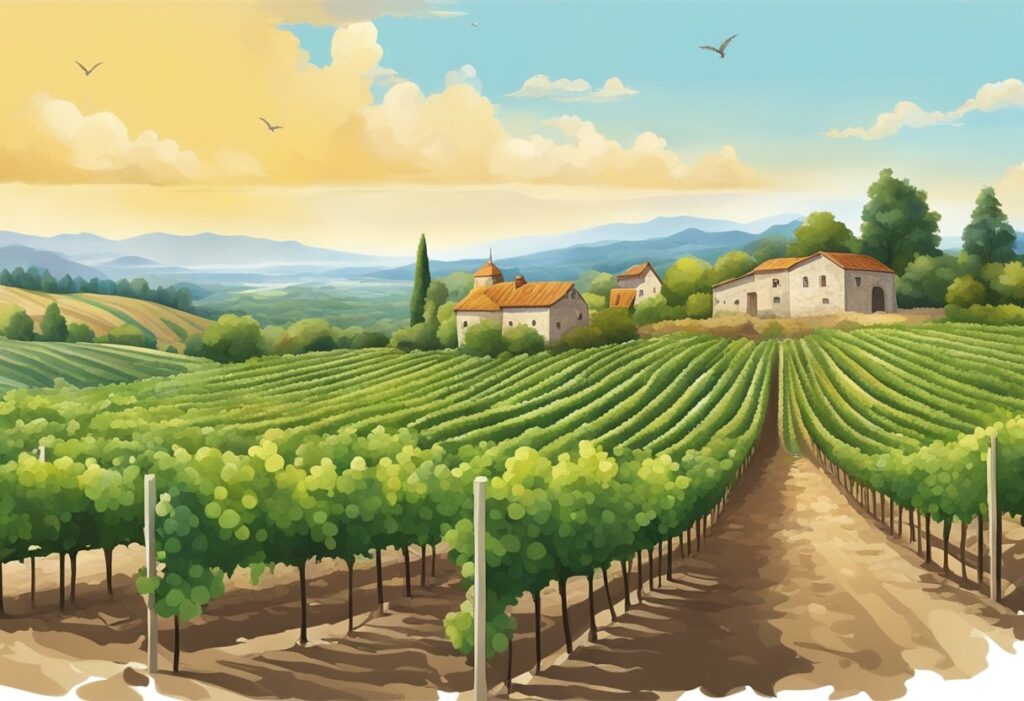
When you select a bottle of biodynamic wine, you’re choosing a beverage with distinct sensory qualities and potential health benefits tied to its organic and sustainable production methods.
Sensory Characteristics of Biodynamic Wines
Biodynamic wines often present a unique taste profile due to the emphasis on terroir—the natural environment where the grapes are grown. You may notice these wines have a more pronounced flavor that genuinely reflects the character of their origin. They are crafted without synthetic chemicals, relying on natural ingredients and additives such as manure and compost. This approach can lead to a more authentic expression of the grape and sustainably nurtured vineyards.
Health Benefits and Considerations
Concerning health, biodynamic wines are typically made with fewer sulfites, which are additives used to preserve most conventional wines. While sulfites can cause adverse reactions in some people, their reduced levels in biodynamic wines may offer you a gentler experience.
Organic wine practices, part of biodynamic certification, eschew chemical fertilizers and pesticides, potentially reducing your exposure to these substances. However, it’s important to note that biodynamic wines aren’t necessarily sulfite-free, and the presence of natural ingredients does not automatically infer health benefits.
Environmental and Societal Benefits
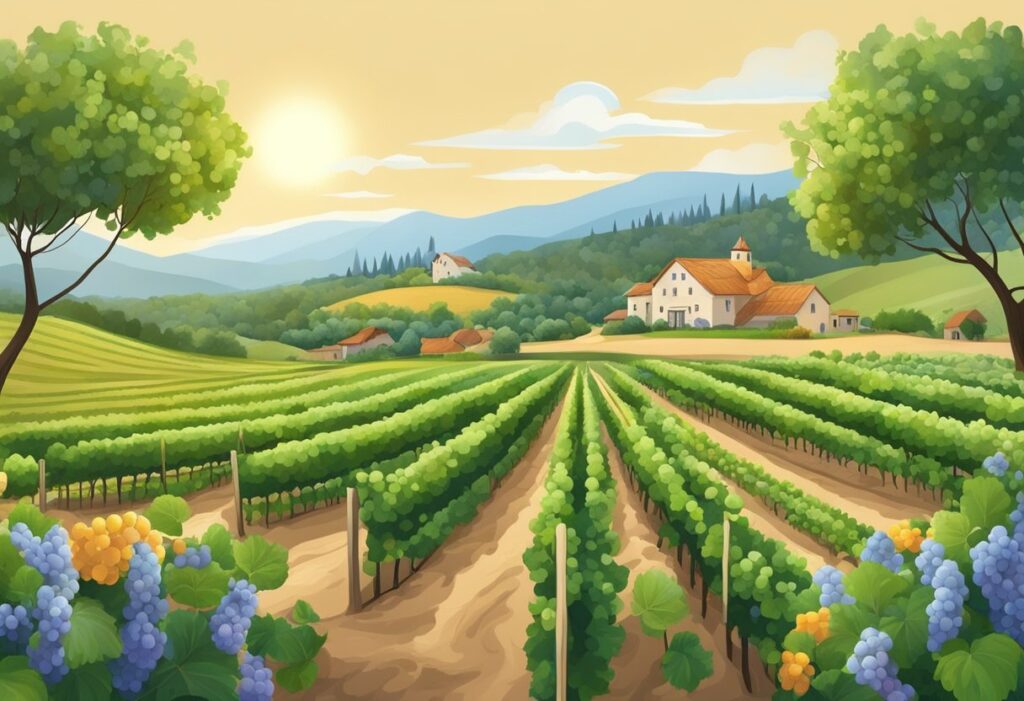
As you explore biodynamic wine practices, you’ll discover that they emphasize not only the quality of the wine but also the positive impact on the environment and society. These practices go beyond organic farming by integrating the vineyard into a larger ecosystem, fostering biodiversity, and promoting sustainability and ethical values.
Promotion of Biodiversity and Ecosystem Health
Biodynamic vineyards prioritize the health of your soil and ecosystem. You’ll find a diverse range of plants and animals coexisting, which is crucial for biodiversity. These practices support a living soil that enriches vine growth and grape quality. The result is a vineyard teeming with life, from beneficial insects to microorganisms, all working together to create a self-sustaining system.
- Implementations include:
- Companion planting to attract beneficial insects.
- Cover crops to maintain soil quality and prevent erosion.
- Integration of animals for natural soil aeration and fertilization.
Sustainable Practices and Ethical Considerations
When you choose biodynamic wines, you’re supporting sustainable and ethical viticulture. These vineyards operate on the principle of giving back as much as they receive from the environment. This includes water conservation measures, renewable energy usage, and sustainable packaging methods. Moreover, by respecting the land and valuing the workers’ well-being, these practices reinforce a strong ethical stance.
- Key aspects include:
- Reduction of carbon footprint through energy-efficient methods.
- Fair labor practices to ensure the health and safety of vineyard workers.
- Recycling and composting to minimize waste and restore nutrients back to the soil.
By understanding and supporting these practices, you contribute to a healthier planet and a more responsible wine industry.
Notable Producers and Regions
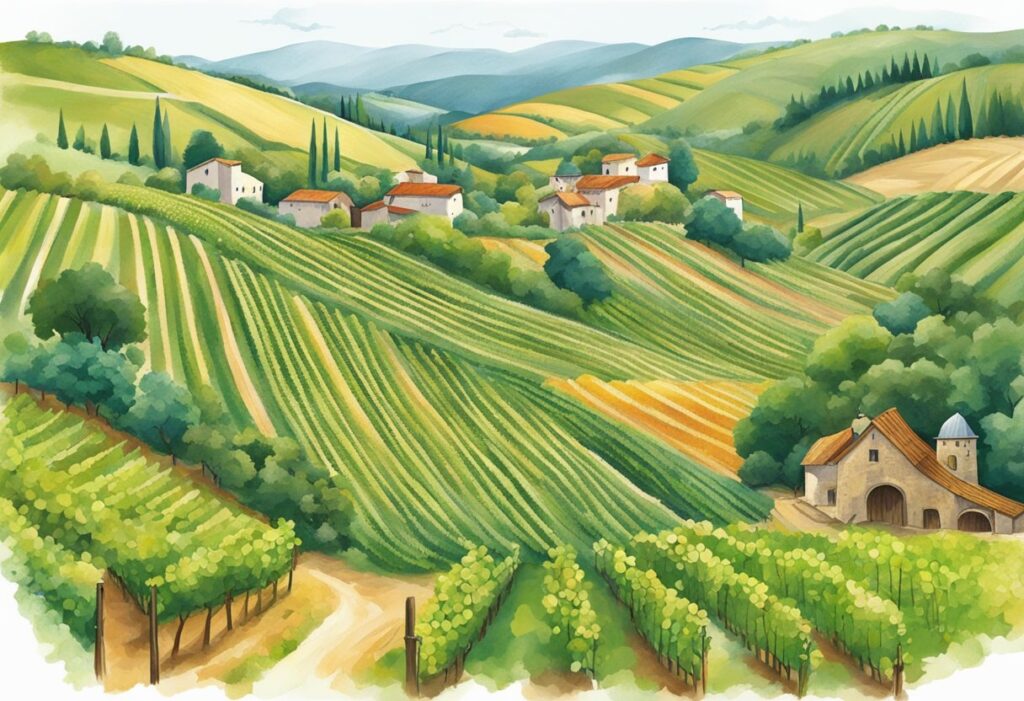
In exploring the world of biodynamic wines, you’ll encounter esteemed producers and diverse regions that exemplify sustainable viticulture practices.
Pioneers in Biodynamic Winemaking
Nicolas Joly, a leading figure in the biodynamic movement, promotes this method with his work at the Coulée de Serrant vineyard in France’s Loire Valley. He upholds the philosophy that biodynamic practices enhance the terroir—the unique characteristics imparted by the natural environment of a vineyard. In Burgundy, Domaine Leroy stands out for its commitment to biodynamic practices, under the meticulous guidance of Lalou Bize-Leroy.
Similarly, Domaine Leflaive in Burgundy and Domaine Zind-Humbrecht in Alsace are trailblazers, showing that wines can reach new heights of quality when harmonized with natural cycles. These iconic domains have set a high bar for both quality and sustainability in grape growing and wine production.
Global Biodynamic Vineyards and Growth
As you look beyond France, you’ll find biodynamic vineyards flourishing globally. Producers in the United States, Australia, Italy, and Spain are adopting these practices. For instance, Californian and Oregonian grape growers are increasingly converting to biodynamic methods, seeing improvements in both their vineyards and the wine they produce.
The growth of biodynamic agriculture reflects a worldwide shift among winegrowers who prioritize ecological balance and environmental well-being. As a winegrower, adopting biodynamic practices is not only about nurturing the vineyard but also about foreseeing a sustainable future for winemaking.
These biodynamic wine producers share a common belief in the importance of natural processes and a commitment to the highest standards of wine quality. They lead by example, showing that care for the land and detailed attention to winemaking practices can create exceptional wines with a true sense of place.
Challenges and Controversies
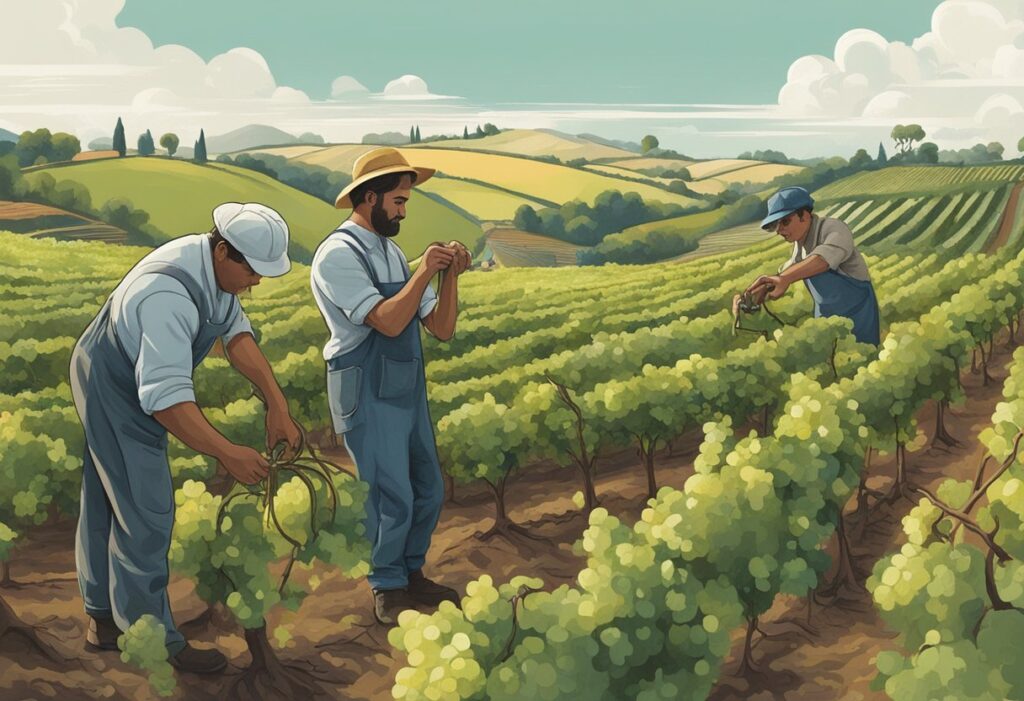
While biodynamic viticulture prides itself on a holistic approach to winemaking, it’s not without its challenges and controversies. The debates center around its scientific validity and practical implementation.
Debates Over Effectiveness and Science
Critics often question the scientific legitimacy of biodynamic methods. For instance, sulfites—commonly used in winemaking—are reduced or eliminated in biodynamic practice. Advocates argue this creates a purer expression of the vineyard, but skeptics raise concerns over preservation and consistency of the wine.
Similarly, preparations such as herbicides made from fermented manure stuffed into cow horns and buried in the soil, are rooted in medieval wine traditions but lack robust scientific research to back their efficacy. The alignment with lunar cycles to plant or harvest grapes may also appear as an esoteric aspect to those outside the practice.
Economic and Production Challenges
Transitioning to biodynamic viticulture faces economic aspects that can be daunting. The cost of certification and the potential for lower yields due to stringent farming practices pose significant concerns.
Managing soil quality and disease without synthetic aids challenges vintners, often resulting in labor-intensive processes that may not be economically viable for every vineyard. The push for organic and biodynamic labels can also be seen through the lens of wine renaissance and exploration, where ancient practices are revived but must prove their economic merit in modern markets.
Future of Biodynamic Wine Practices
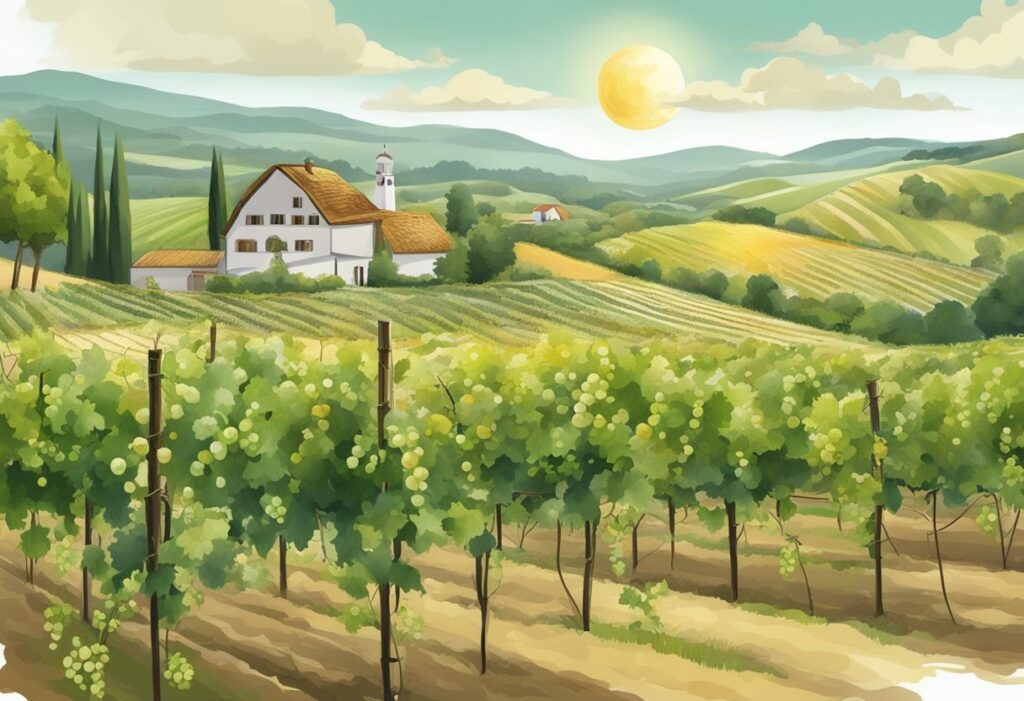
Biodynamic wine production is at a pivotal point where sustainability and innovation intersect to shape a more resilient and ethical future in agriculture.
Innovation and Adaptation in Biodynamic Farming
As you delve into the world of biodynamic wine, it’s evident that constant innovation is key to its evolution. With the adoption of temperature-controlled fermentation, vineyards are better positioned to handle the unpredictable variables of climate change, ensuring the quality and character of their wines remain untarnished. This form of innovation aligns with biodynamic principles, aiming for harmony between the wine, the drinker, and the planet.
Adaptation also plays a crucial role. The use of steel tanks in fermentation is a response not only to the desires for modernity but also reflects a drive towards more sustainable practices. These practices help manage resources efficiently, ensuring that the vineyard ecosystem is preserved for future generations.
Education and the Spread of Knowledge
The biodynamic community thrives on education and the collective spread of knowledge. As awareness grows, so does the reach of biodynamic principles, from the individual farmer to the global agriculture community. It’s not just about producing organic and biodynamic wine, but also about fostering a community that values and implements sustainable practices.
Additionally, initiatives to share advancements through platforms discussing new world wine labeling contribute to an informed public. When consumers understand the significance behind a wine label, they’re better equipped to support the practices that align with their values for sustainability and quality.
Through ongoing education and adaptation, you will likely witness an expansion of biodynamic practices, not just in vineyards, but as a transformative movement within global agriculture.
